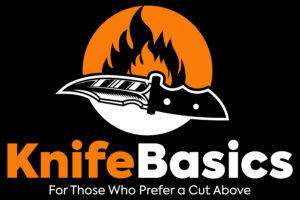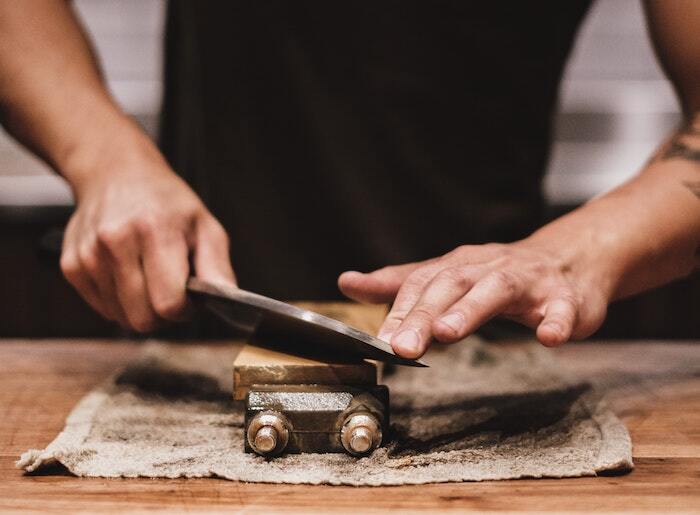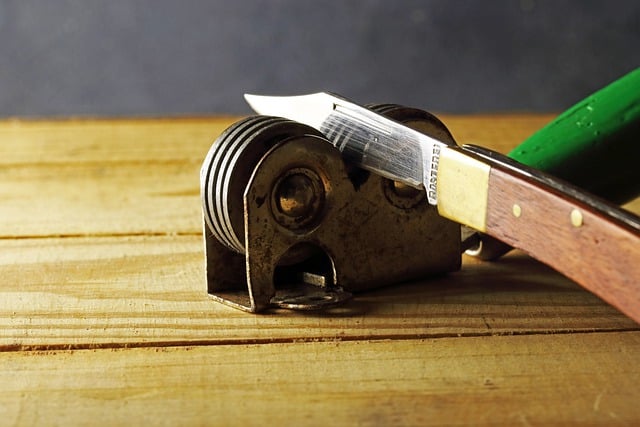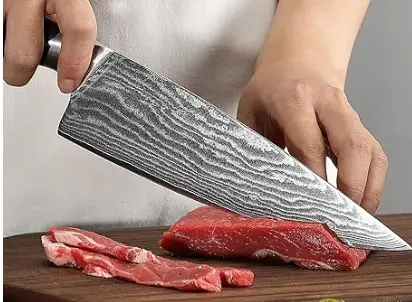You must have heard about sharpening angles if you are learning knife sharpening skills. Selecting the right sharpening angle is an important step in knife sharpening because it determines the blade’s sharpness and durability. So, what is the best angle to sharpen a knife?
The best angle to sharpen a knife depends on how you intend to use the knife, the thickness of the blade, the steel used to make the blade, the sharpening tools used, and your preference. Knives have no standard sharpening angle, but most kitchen knives are sharpened at a 15-20 degrees angle.
This article will discuss factors that determine the best sharpening angle, different sharpening angles, and the importance of choosing the right angle. Let’s get into it!
Factors That Determine the Right Sharpening Angle
Determining the best sharpening angle is easy as long as you know other knife sharpening basics. Here are factors that determine the best sharpening angle for your knives.
Use of the Knife
Smaller sharpening angles produces very sharp blades ideal for precise cutting and chopping. On the other hand, wider angles create durable blade edges suitable for demanding cutting jobs like slicing bones or cutting coarse vegetables.
Steel Hardness
The Rockwell hardness of the steel used to make your knife blade determines its durability. Different types of steel offer varied strength, and this impacts the sharpening edge.
Knife blades made from hard steel should be sharpened at smaller angles because they yield a lot of strength. Soft steel, on the other hand, should be sharped at steeper angles which helps them withstand the stress without deforming.
Blade Thickness
Knives with thin blades get a sharp edge faster when sharpened at lower angles. On the other hand, thick blades should be sharpened at wider angles because they have a lot of material on the edge, and it will take you more time and energy to get a sharp edge.
Knife User’s Preference
Are you looking for sharpness or durability? Your choice between the two determines the angle you will use. A lower sharpening angle will give a very sharp edge, while wider angles give you a durable blade.
Sharpening Angles for Knives
Under 10 Degrees
Sharpening angles of less than 10 degrees result in delicate edges that are easily damaged. Such edges are suitable for blades used to cut soft material because there is less risk of abuse that might lead to breakage and other forms of damage.
Such low angles of 7 to 8 degrees are easily achieved using fine sharpening tools with at least 1000 grit, like water stones. This angle is very low for knives. It is suitable for straight razors used to cut soft materials like hair.
10-15 Degrees
Sharpening angles falling under this category produce very fine and delicate edges, but it is low for most knives. These angles should not be used to sharpen blades made from very hard steel because the blades are very brittle and highly susceptible to damage.
Knives sharpened at this angle should only be used for slicing meat or cutting very soft foods but never for chopping needs. They should only be sharpened using very fine abrasives like water stones.
15-17 Degrees
Most Japanese and new cutlery are sharpened at 15-17 degrees. It is the lowest angle recommended for most blades, and they produce good cutting power. The edges produced are less durable than wider sharpening angles, but the sharpness achieved pays off.
Therefore, use angles between 15 and 17 if only you are looking for sharpness. Different sharpeners for this angle include guided systems, sharpening stones, or powered sharpeners.
17-22 Degrees
Most kitchen and outdoor knives fall under the category of 17-22 sharpening degrees. Japanese knife manufacturers recommend 17 degrees for their knives, while western knife manufacturers use 20 degrees.
Knives sharpened in this category offer both durability and sharpness, and it can be achieved using guided systems, sharpening stones, or powered sharpeners.
22-30 Degrees
Sharpening angles between 22 and 30 degrees produce durable edges. This range is ideal for outdoor or kitchen knives used for tough applications. The edges do not give precise cuts, but they will withstand impact and pressure without breaking or chipping.
Most sharpeners can sharpen these angles, including guided systems, sharpening stones, and powered sharpeners.
Over 30 degrees
Knives sharpened past 30 degrees are durable but at the sacrifice of their cutting ability. Cutlers like axes, machetes, and cleavers are sharpened at this range, allowing them to withstand the cutting abuse they are subjected to.
Knife Sharpening Angle Chart
The chart below will help you determine the best sharpening angle for knives and tools
| Knife/Tool | Recommended Sharpening Angle |
|---|---|
| Cleaver Machete Axe |
Over 30 degrees Offers durability |
| Hunting Knives Pocket Knives Sport Knives |
22-30 degrees Offers more durable edges |
| Chef’s Knives Kitchen Knives Smaller Knives Boning Knives Carving Knives |
17-22 degrees Offers both sharpness and durability |
| Fillet Knives Paring Knives Sushi Knives Most Japanese Cutlery |
12-17 degrees Offers fine and delicate edges |
| Straight Razors Razor Blades X-Acto Knives |
7-12 degrees Very delicate edge |
What Is The Best Sharpening Angle For Beginners?
20 degrees is the best sharpening angle for beginners. It works well for most kitchen and outdoor knives because it offers durability and sharpness.
How Do You Know if you’ve Got The Right Angle?
Determining the right sharpness angle is an easy skill, but it might take you some time before you learn how to establish and maintain the right angle for different types of knives. The good news is that there are sharpeners that set and maintain the right angle. Invest in such if you are finding it difficult to determine the right sharpening angles.
Importance of Choosing the Right Sharpening Angle
Choosing the right sharpening angle is important because it determines the sharpness and durability of the blade. These properties determine the purpose of the knife. As a rule of thumb, smaller angles offer fine and sharp edges suitable for soft cutting needs. On the other hand, wider sharpening angles offer durable edges that can withstand abuse from demanding applications.




